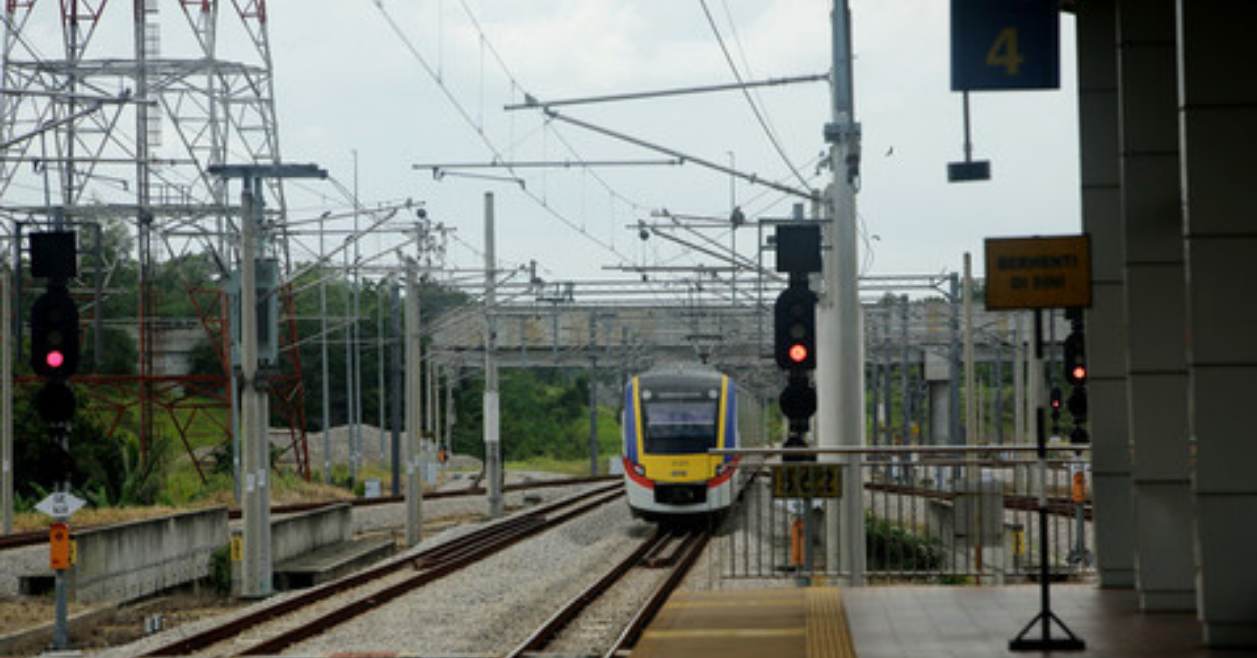THE Keretapi Tanah Melayu Electric Train Service (KTM ETS) plying between Kuala Lumpur and Butterworth has gained a sizable ridership since its inception in 2010.
One way train fare could cost up to RM83 and the trip to a city station is much shorter than to a distant air terminal. Train passengers do not have to go through the hassle of checking in and clearing security at the airport, and then wait indefinitely until the aircraft finally takes off.
But is KTM exploiting ETS like a goldmine or have sound strategies in place to nurture this cash cow?
Apparently not, as the recent breakdown of ETS exposed a glaring weakness of KTM.
On June 12, a fully packed ETS train departed Kuala Lumpur at 3:55pm and was scheduled to arrive Butterworth at 8:07pm but the train broke down before it could reach Butterworth.
At Bukit Mertajam, a technical glitch brought the train to a complete halt. Alas, passengers were kept in the dark and left to fend for themselves. Those that did not wish to wait indefinitely on board the carriages disembarked and booked e-hailing service to reach their destinations.
When informed of the train breakdown, KTM board chairman Datuk Seri Musa Sheikh Fadzir expressed regret and apologised. He said although train services may periodically suffer technical glitches, it is unkind to leave passengers stranded without alternatives.
He stated that train repairs should be expedited in the future and will order an investigation into the incident. He also said “I am disappointed. We need to improve the standard of our service. And I hope there is no recurrence of it in the future.”
Mercifully, he did not claim that the train needed a rest before continuing its journey, unlike the former chairman of Prasarana who brushed off a collision in Kuala Lumpur a year ago as “two trains kissing each other”.
However, such incidents will continue to recur for as long as there are no contingency plans to deal with various situations.
While standard operating procedures (SOPs) are needed for routine work, contingency plans are SOPs ready to be activated for handling accidents and incidents. As such, they require many weeks or even months to prepare the first version, and they must be updated on a regular basis.
Bin hollow mission statements
In comparison, it is easy to craft vision and mission statements. It will have to start with appointing a competent working committee. For most organisations, this could range from four to eight persons but for KTM or an airline, the number may be doubled. This will be followed by brainstorming sessions that easily take a few days or weeks.
The aim is to get everyone to speak freely with every suggestion on what may possibly go wrong recorded without being judgemental. The next step is to group and arrange them in sequence before evaluating risks individually and finding at least two solutions for mitigation.
Once the initial draft is ready, the working committee will conduct a presentation to the top management for scrutiny and advice. The contingency plans will undergo several amendments until they are finally approved, with only the top management having access to the full version.
Shorter versions without confidential information are to be shared with the respective staff, depending on the roles they play in the organisation. Field staff will receive copies that are applicable for their line of work but if kept under lock and key, contingency plans are useless.
All staff are to be formally briefed on contingency plans and trained where necessary, so that everyone could perform their respective roles effectively. Plus, contingency plans need to be updated several times a year and revised annually as the world is evolving.
Due diligence
In the case of train breakdowns, KTM should have made prior arrangements with bus companies to provide emergency services. Preference should be given to tour buses but where they are in short supply, school, workers and stage buses (from the pool) could also be deployed.
When needed, instead of calling bus companies one by one and speaking from one person to another, it is better to reach the drivers directly through their smartphones.
Drivers proceeding to the train station must send a text to the WhatsApp group their estimated time of arrival. If 15 drivers have confirmed that they are on the way and the number is sufficient for all passengers, KTM could notify the rest that their service is no longer needed.
In this way, there is no wastage. If for almost a year there were no train breakdowns requiring the use of buses to ferry passengers from one station to another, KTM could conduct a drill to assess the readiness and efficiency of bus drivers and pay them reasonably for making the trip.
Likewise, organisations with contingency plans should test them at least once every six months and seek feedbacks from the staff for action steps to be tweaked where necessary. If this were done, it could also prevent or at least minimise many undesirable outcomes from occurring.
Ultimately, the best way to rate any organisation is not to scrutinise its vision and mission statements, as they are hollow with nothing concrete and key performance indicator (KPI) that was designed to look good but easy to achieve is nothing more than “syiok sendiri” exercise.
The true litmus test is having a comprehensive set of contingency plans with every staff given a PDF copy that is applicable for their duties and stored in their smartphones for easy retrieval. Giving promises and conducting investigations only after disaster struck is too little too late. – June 20, 2022
YS Chan is Asean Tourism Master Trainer for travel agencies, master trainer for Mesra Malaysia and Travel & Tours Enhancement Course. He is also a tourism and transport industry consultant and writer.
The views expressed are solely of the author and do not necessarily reflect those of Focus Malaysia.










